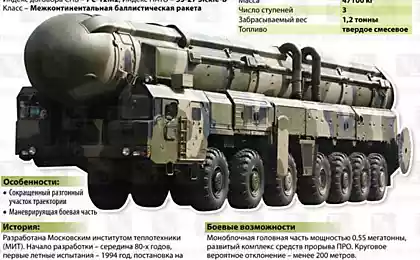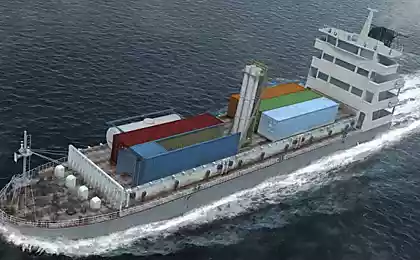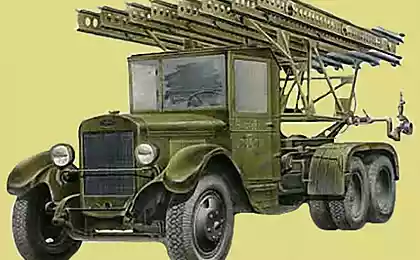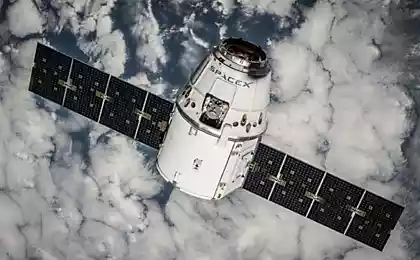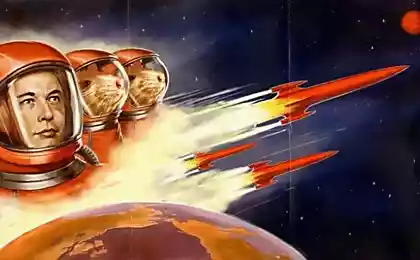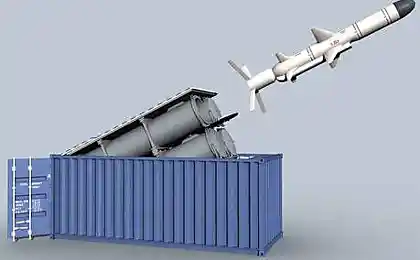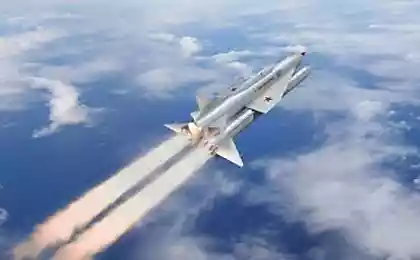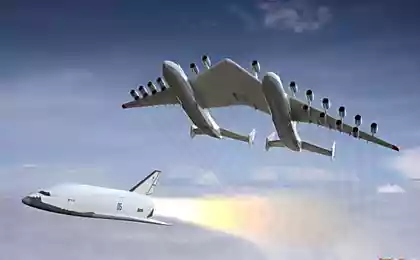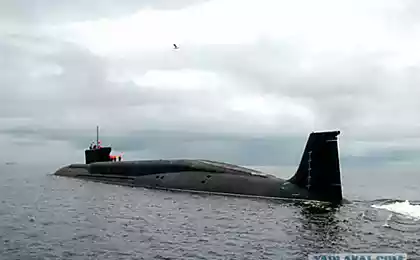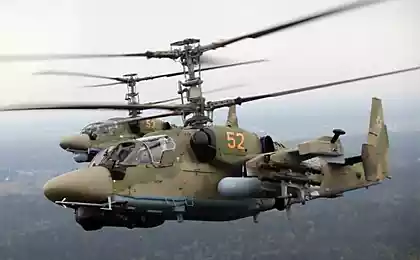747
More we were doing, "Rockets"
In the ranking of my most-most powerful children's joy, that I can deliver the parents, after a trip to the Crimea by car and buying a new high, but the front-governmental routine trip to the zoo or a cafe-ice cream was walking on it. Space, unearthly fiction stories came from the "Rocket." Will ph 6, the end of mayaknu.

Moscow, as is well known - the city of the land, even though the port of five seas (people say). According to this, any boat trip to Moscow already milksop event. People living along the banks of rivers serious, or at least the northern Venice, currently make boring person, they say whether it is necessary here to breed from scratch. It is, you just do not understand. I have nothing, let's say the kid from Nizhny Novgorod, where the "Rocket" went as a taxi and became a miracle of engineering in the familiar phenomenon. In Moscow, all the pleasures of the trip was affordable or gently slap on fuel oil rainbow "Ehmke". Adult tickets in my opinion was worth 40 cents, children - 20. Those who remember exactly correct.
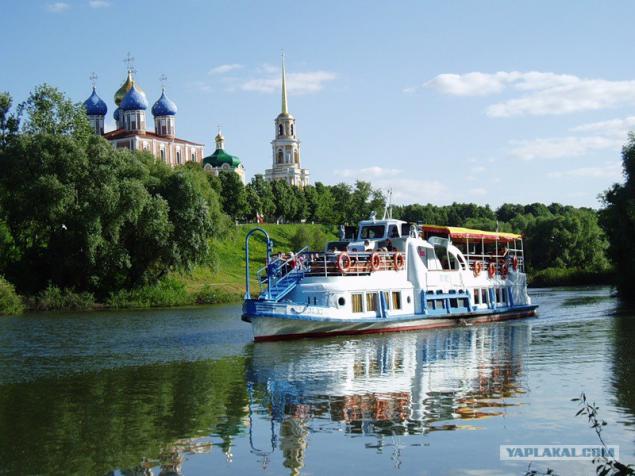
But the "Rocket" - the event already. Let the main pier walking path - "Kiev railway station" was virtually under the windows, but rarely timetable and utter ticket price (adult Toli ruble twenty, Toli all ruble-fifty) was converted simply moving from point A to point B almost in ministering. Poor parents tried in vain to catch buynopomeshanoe child wearing between the nose (cuz look forward shtoby) and the stern, where the open deck. In our circle we went scary legends (wetland residents, please do not fall under the table). "Rocket" in the well water can accelerate to 500 km / h. The fact was not disputed and is used in conversation as an axiom. On the "Rocket" is the real engine of the spacecraft (just cuz the water is not visible, because otherwise would not be called). When on the go stick his head out the window, you can die (cuz you can not breathe because of the speed), and almost every one of my yard buddy knew the guy from the seventh door, well, on the edge of the fourteenth house that even so he died (remember the funeral two weeks ago It was something like that!) and finally "Rocket" ran only former pilots. One very respected boy called board numbers of ships captains were dismissed for drunkenness astronauts.
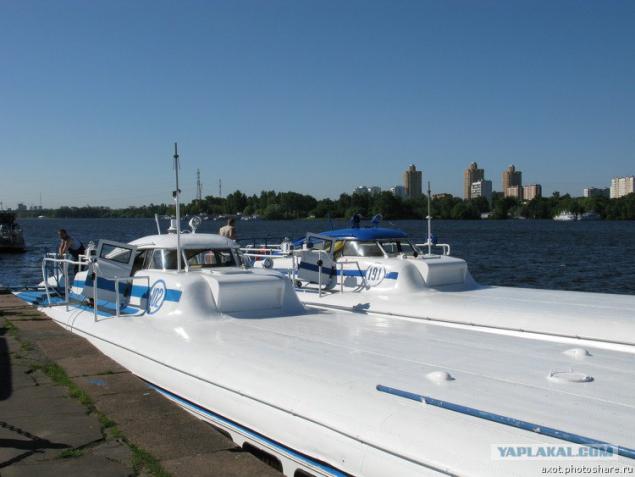
Now in Moscow "Rocket" Beast is very rare, there are those - banqueting options, and therefore boring. And you just want to come to the familiar childhood dock, waiting as you need to pass on the creaky ladder to the interior designed in the rounded style of unfulfilled fantasy and fly at a speed of 500 km / h struggling with suicidal desire to stick his head out the window.
And some of the facts.
"Rocket" - the name of the series of Soviet passenger river ships on hydrofoils (projects 340, 340E, 340ME). Release "Rocket" began in 1957 and lasted until the mid-1970s. It was built around three hundred ships. The first ship in the series "Rocket-1" was built at the factory "Red Sormovo". His first flight "Rocket-1" made August 25, 1957. During the flight distance of 420 kilometers from Gorky to Kazan it was completed in seven hours. On board were thirty passengers.
Serial production of "Missiles" has been launched on Feodosia shipbuilding factory "Sea". From 1959 to 1976, it was built 389 "missiles", including 32 for export. High-speed diesel engines were delivered from Leningrad by the stars [1].
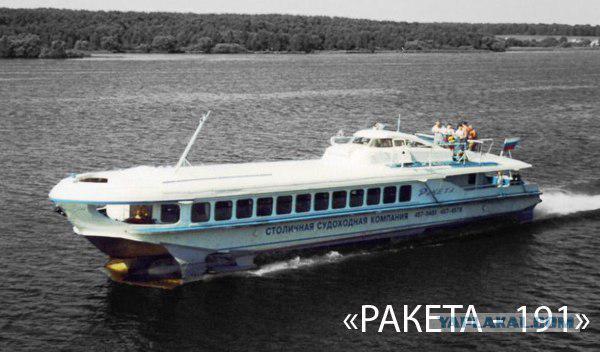
"Missiles" were very popular, their name became a household name and is often referred to as all vessels of this type. A trip to the "Rocket" in some picturesque bay was one of the favorites, although not cheap (the price of tickets for such vessels significantly exceeds the price of commuter trains on the same distance), forms a family holiday on the river.
In Nizhny Novgorod, "Rockets" were used in the daily commuter traffic, as well as the excursion boats. Operation of ships engaged in shipping company "Volga Shipping" [2].
In Moscow, the first "Rocket" (namely "Rocket-1") appeared in the days of the VI International Festival of Youth and Students in the summer of 1957. "Rocket" brought to the capital of the chief designer of the ship - R. Alekseev - and personally demonstrated its Khrushchev.
The mass exploitation of "Rocket" was conducted in Moscow since the beginning of the 1960s until 2006. Since 2007, Moscow has begun a gradual recovery "missiles". In 2009 navigation on the go four "Missiles": 102 (VIP-lounge, in the regular services not used), 185, 191 (formerly No. 244), and 246. According to some reports in the near future is possible to recover a few more ships. There was a fire modification "Rocket-P" with two fire nozzles and water systems and air-foam protection. The range of "firing" - 90 m. Water supply - 800 cubic meters. m / hour
"Missiles" exploited (exploited)
• Finland, 1962-1983 gg., 2005-present.
• China
• Lithuania - line from Kaunas to Klaipeda, Nida, Juodkrantė (restored in 2010)..
• Russia
• Ukraine
• Romania - currently hydrofoils are used in regular daily flights to Romania in the Danube Delta, between the towns of Tulcea and Sulina, Tulcea and St. George.
TTX
The tonnage of 18 tons (unladen)
25, 3 tons (full)
Length 27 m
The width of 5 m
The height of 4 to 5 m
Average sediment 1, 8 m (parking lot)
1 1 m (foilborne)
Screws one propeller
1000-900 Power hp (depending on version)
The speed of 70 km / h (maximum)
60-65 km / h (operating)
Cruising 600 km
Passenger capacity 64-66 people (depending on version)
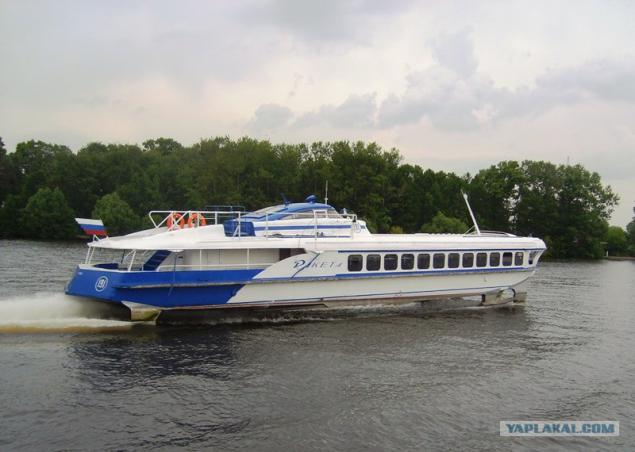
Rocket - 2 "altered in a cafe, located in Rybinsk. The fate of №1 I know nothing.
That's all. Thank you.

Source:

Moscow, as is well known - the city of the land, even though the port of five seas (people say). According to this, any boat trip to Moscow already milksop event. People living along the banks of rivers serious, or at least the northern Venice, currently make boring person, they say whether it is necessary here to breed from scratch. It is, you just do not understand. I have nothing, let's say the kid from Nizhny Novgorod, where the "Rocket" went as a taxi and became a miracle of engineering in the familiar phenomenon. In Moscow, all the pleasures of the trip was affordable or gently slap on fuel oil rainbow "Ehmke". Adult tickets in my opinion was worth 40 cents, children - 20. Those who remember exactly correct.

But the "Rocket" - the event already. Let the main pier walking path - "Kiev railway station" was virtually under the windows, but rarely timetable and utter ticket price (adult Toli ruble twenty, Toli all ruble-fifty) was converted simply moving from point A to point B almost in ministering. Poor parents tried in vain to catch buynopomeshanoe child wearing between the nose (cuz look forward shtoby) and the stern, where the open deck. In our circle we went scary legends (wetland residents, please do not fall under the table). "Rocket" in the well water can accelerate to 500 km / h. The fact was not disputed and is used in conversation as an axiom. On the "Rocket" is the real engine of the spacecraft (just cuz the water is not visible, because otherwise would not be called). When on the go stick his head out the window, you can die (cuz you can not breathe because of the speed), and almost every one of my yard buddy knew the guy from the seventh door, well, on the edge of the fourteenth house that even so he died (remember the funeral two weeks ago It was something like that!) and finally "Rocket" ran only former pilots. One very respected boy called board numbers of ships captains were dismissed for drunkenness astronauts.

Now in Moscow "Rocket" Beast is very rare, there are those - banqueting options, and therefore boring. And you just want to come to the familiar childhood dock, waiting as you need to pass on the creaky ladder to the interior designed in the rounded style of unfulfilled fantasy and fly at a speed of 500 km / h struggling with suicidal desire to stick his head out the window.
And some of the facts.
"Rocket" - the name of the series of Soviet passenger river ships on hydrofoils (projects 340, 340E, 340ME). Release "Rocket" began in 1957 and lasted until the mid-1970s. It was built around three hundred ships. The first ship in the series "Rocket-1" was built at the factory "Red Sormovo". His first flight "Rocket-1" made August 25, 1957. During the flight distance of 420 kilometers from Gorky to Kazan it was completed in seven hours. On board were thirty passengers.
Serial production of "Missiles" has been launched on Feodosia shipbuilding factory "Sea". From 1959 to 1976, it was built 389 "missiles", including 32 for export. High-speed diesel engines were delivered from Leningrad by the stars [1].

"Missiles" were very popular, their name became a household name and is often referred to as all vessels of this type. A trip to the "Rocket" in some picturesque bay was one of the favorites, although not cheap (the price of tickets for such vessels significantly exceeds the price of commuter trains on the same distance), forms a family holiday on the river.
In Nizhny Novgorod, "Rockets" were used in the daily commuter traffic, as well as the excursion boats. Operation of ships engaged in shipping company "Volga Shipping" [2].
In Moscow, the first "Rocket" (namely "Rocket-1") appeared in the days of the VI International Festival of Youth and Students in the summer of 1957. "Rocket" brought to the capital of the chief designer of the ship - R. Alekseev - and personally demonstrated its Khrushchev.
The mass exploitation of "Rocket" was conducted in Moscow since the beginning of the 1960s until 2006. Since 2007, Moscow has begun a gradual recovery "missiles". In 2009 navigation on the go four "Missiles": 102 (VIP-lounge, in the regular services not used), 185, 191 (formerly No. 244), and 246. According to some reports in the near future is possible to recover a few more ships. There was a fire modification "Rocket-P" with two fire nozzles and water systems and air-foam protection. The range of "firing" - 90 m. Water supply - 800 cubic meters. m / hour
"Missiles" exploited (exploited)
• Finland, 1962-1983 gg., 2005-present.
• China
• Lithuania - line from Kaunas to Klaipeda, Nida, Juodkrantė (restored in 2010)..
• Russia
• Ukraine
• Romania - currently hydrofoils are used in regular daily flights to Romania in the Danube Delta, between the towns of Tulcea and Sulina, Tulcea and St. George.
TTX
The tonnage of 18 tons (unladen)
25, 3 tons (full)
Length 27 m
The width of 5 m
The height of 4 to 5 m
Average sediment 1, 8 m (parking lot)
1 1 m (foilborne)
Screws one propeller
1000-900 Power hp (depending on version)
The speed of 70 km / h (maximum)
60-65 km / h (operating)
Cruising 600 km
Passenger capacity 64-66 people (depending on version)

Rocket - 2 "altered in a cafe, located in Rybinsk. The fate of №1 I know nothing.
That's all. Thank you.

Source:
